In the quest for optimizing fitness routines, resistance bands have emerged as a versatile and effective tool. Whether you are a beginner or an experienced athlete, incorporating resistance bands into your workouts can elevate your training regimen. In this blog, we will explore the myriad benefits that resistance bands offer, ensuring you get the most out of your workouts.
Understanding Resistance Bands and Their Types
Resistance bands are elastic bands that provide varying levels of resistance during exercise. They come in several types, each designed to serve different purposes. The most common types include flat bands, tube bands, and loop bands, with applications ranging from strength training to rehabilitation. Understanding these types is crucial for selecting the right band for your workout.
Flat bands, often seen in physical therapy, are ideal for providing gentle resistance and improving flexibility. Tube bands, equipped with handles, are more versatile for strength building and are commonly used in a variety of workout routines. Loop bands, which are circular, are excellent for lower body exercises like squats and leg lifts, enhancing strength without the need for weights.
Additionally, resistance bands are color-coded by resistance level, making it easy to choose the right intensity for your fitness level. For beginners, lighter bands can help master the basic movements, while more advanced users can progress to heavier bands for greater challenges. This adaptability is what makes resistance bands a compelling choice for individuals at any stage of their fitness journey.
The Advantages of Using Resistance Bands in Workouts
Resistance bands provide a level of convenience and efficiency that traditional weights often lack. They are lightweight, portable, and can be used virtually anywhere—from a crowded gym to the comfort of your living room. This portability allows for consistent workouts, helping users maintain their fitness routine regardless of their environment.
Moreover, resistance bands lessen the risk of injury by offering a low-impact alternative to heavy lifting. They impose less strain on the joints, making workouts safer, especially for individuals recovering from injuries or anyone looking to prevent future ones. This versatility is particularly essential in rehabilitation settings, where movement must be gentle yet effective.
Another significant advantage is the different modes of resistance they provide. Unlike weights, which only apply resistance through gravity, resistance bands produce tension throughout the entire range of motion. This means your muscles are engaged in a continuous state, resulting in more effective workouts that can lead to improved strength and muscle tone.
How Resistance Bands Enhance Strength Training
Incorporating resistance bands into your strength training regimen can yield impressive results. Unlike traditional weights that rely solely on gravity, resistance bands utilize variable resistance, allowing you to target different muscle groups dynamically. As you stretch a band, the resistance increases, providing a unique challenge that can lead to greater strength gains.
One of the primary benefits of resistance bands is their ability to improve muscle activation. Fitness experts have shown that working against the tension of bands enhances muscle engagement, leading to more effective workouts. This is especially noticeable during compound movements where multiple muscle groups engage, as the bands force your body to stabilize and control the movement more actively.
Moreover, resistance bands are highly effective for progressive overload, a key principle for muscle growth. By simply switching to a band with higher resistance, you can effectively increase the challenge of your workouts without needing to invest in heavier weights. This flexibility not only helps in gaining strength but also keeps your workouts fresh and exciting.
Incorporating Resistance Bands for Flexibility and Mobility
Resistance bands are not just for strength training; they are also a fantastic tool for improving flexibility and mobility. By engaging in resistance band exercises specifically designed for stretching, you can enhance your range of motion and overall flexibility. This is particularly beneficial for athletes and fitness enthusiasts who require a full range of joint mobility.
Using resistance bands for stretching helps maintain proper alignment and reduces the risk of injury. For instance, incorporating a band into your dynamic warm-up can activate the muscles while promoting blood flow, effectively preparing your body for more rigorous activity. Additionally, they can be employed for static stretches post-workout, aiding in recovery and muscle relaxation.
Furthermore, by adding resistance to stretching exercises, you can enhance the effectiveness of your flexibility routine. For example, performing a hamstring stretch while holding onto a band can help you reach greater lengths than you might achieve without assistance. This level of support can lead to improved muscle extensibility and versatility in your fitness performance.
Creating a Resistance Band Workout Routine
Developing a comprehensive workout routine that incorporates resistance bands can be straightforward and highly rewarding. First, assess your fitness goals—are you aiming to build strength, increase flexibility, or perhaps both? Depending on your objectives, you can tailor your routine to focus on specific muscle groups or full-body workouts.
A balanced routine might include exercises that target the core, upper body, and lower body, providing a well-rounded approach to fitness. For instance, begin with a band-assisted squat to warm up and engage the lower body muscles, then transition to rows, which effectively target the back and biceps. Incorporating a variety of movements not only enhances muscular endurance but also keeps your workouts exciting and motivating.
To maintain progress, it is crucial to regularly update your routine. You can do this by varying the resistance levels, changing the exercises, or altering the number of sets and reps. By introducing new challenges, you can ensure continual improvement and prevent workout monotony. An effective way to track your progress is by keeping a workout journal, where you can record your accomplishments and set new goals.
Common Mistakes to Avoid When Using Resistance Bands
While resistance bands are an exceptional fitness tool, there are common mistakes that users should be aware of to maximize their benefits. One prevalent error involves using bands that are too strong or too weak for their current fitness level. Selecting the right resistance is crucial for maintaining proper form and achieving effective results.
Another frequent mistake is not focusing on control during exercises. Many users tend to rush through their movements, which diminishes the efficacy of the workout and increases the risk of injury. Emphasizing slow, controlled motions not only ensures that the targeted muscles are properly engaged but also improves balance and stability.
Lastly, it is important to diversify your exercises. Sticking to the same bands and routines can lead to plateaus in progress. To continually challenge yourself, mix in new exercises, adjust resistance levels, or explore different types of bands. By keeping your routine dynamic, you can reap the full benefits of your resistance band workouts.
Success Stories: Real-Life Benefits of Resistance Bands
The transformative effects of resistance bands can be seen in numerous success stories from individuals who have integrated these tools into their fitness journeys. Many people share how incorporating resistance bands helped them regain strength after injuries. Physiotherapists frequently use them in rehabilitation settings, where clients have reported improved muscle recovery and increased mobility as a result of regular resistance band training.
Additionally, users often highlight the convenience of resistance bands, especially those with busy lifestyles. One individual recounted how they achieved remarkable fitness gains while traveling for work, using resistance bands in hotel rooms for consistent workouts. This adaptability made it easier to stay committed to fitness goals, proving that effective exercise does not have to be confined to a gym.
Moreover, resistance bands have fostered a sense of community among fitness enthusiasts. Many have turned to social media platforms to share their workouts, fostering motivation and support. This camaraderie not only encourages others to try resistance bands but also creates a platform for exchanging tips and best practices, making the journey toward fitness even more enjoyable.
Unlock Your Fitness Potential with Resistance Bands
Incorporating resistance bands into your workout routine can significantly enhance your strength training and flexibility. They not only provide a wide range of exercises but also cater to all fitness levels, making them an essential tool for anyone looking to maximize their workouts. By embracing the diversity and adaptability of resistance bands, you can achieve your fitness goals more effectively and enjoyably.







